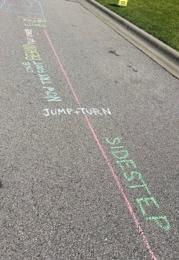Tips to help engage your child during play
- All Care Therapies

- Aug 5, 2021
- 2 min read
Sometimes it can be difficult to engage a young child with complex communication needs in play; It can even feel like they don’t want to play with you! In reality, it is frequently us, the adults, that simply need to adjust the way we play to get the interaction started! Here are a few quick tips to help you engage your child:
Follow the leader!
Your child is an expert in their own unique form of play. Begin by copying their actions to show them you want to play too! Be sure to only copy actions that don’t break your home’s rules - in other words, don’t copy throwing toys if they aren’t allowed to throw them to begin with.
Get on their level!
Put yourself right in their view by positioning yourself in front of your child and lowering yourself to the level of their face or their eye gaze. If the eye contact is a little too much, try playing side by side in front of a mirror instead!
No pressure!
Sometimes when adults play we have a habit of asking our children lots of questions (example: Where is the car going? Can I have a ride?) or giving directions (example: Let’s drive over here. Bring your car over to this side!) without even thinking about it. This places pressure on the child respond, whether we really mean for them to or not!
Leave a comment!
Instead of asking questions or giving directions, we can enrich the play with language by talking about what we are doing (example: I’m driving my car up the hill!) or by narrating what they are doing (example: Wow! You are driving your car so fast!).
Keep it simple!
Remember to keep your comments at the level your child can easily understand (and maybe even imitate sometime in the future!). If your child is not currently speaking, try to stick to one to two words (example: Push car. Go car!). If your child is more advanced, go for simple sentences (example: My car is parking. I’m going to win!) and add details to grow as they do!

Reference:
Ingersoll, B. & Dvortcsak, A. (2019). Teaching social communication to children with Autism and other developmental delays, second edition. The Guilford Press.




Comments